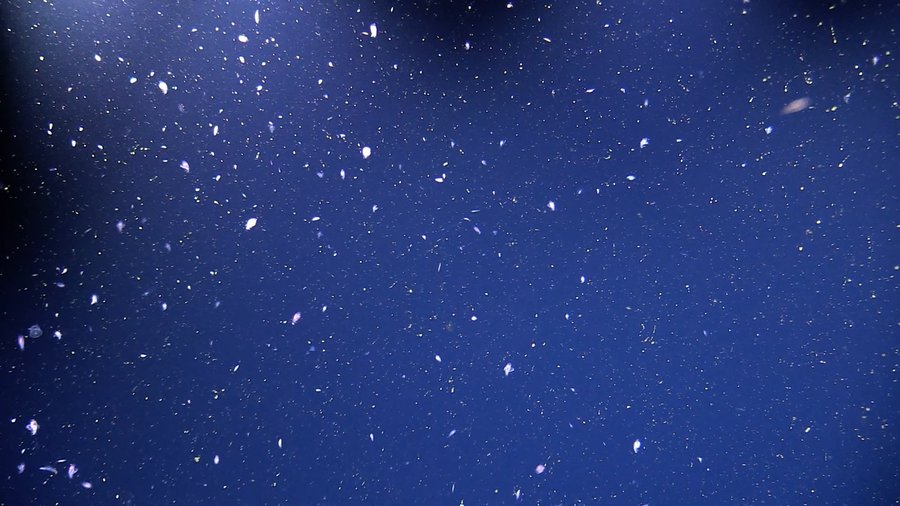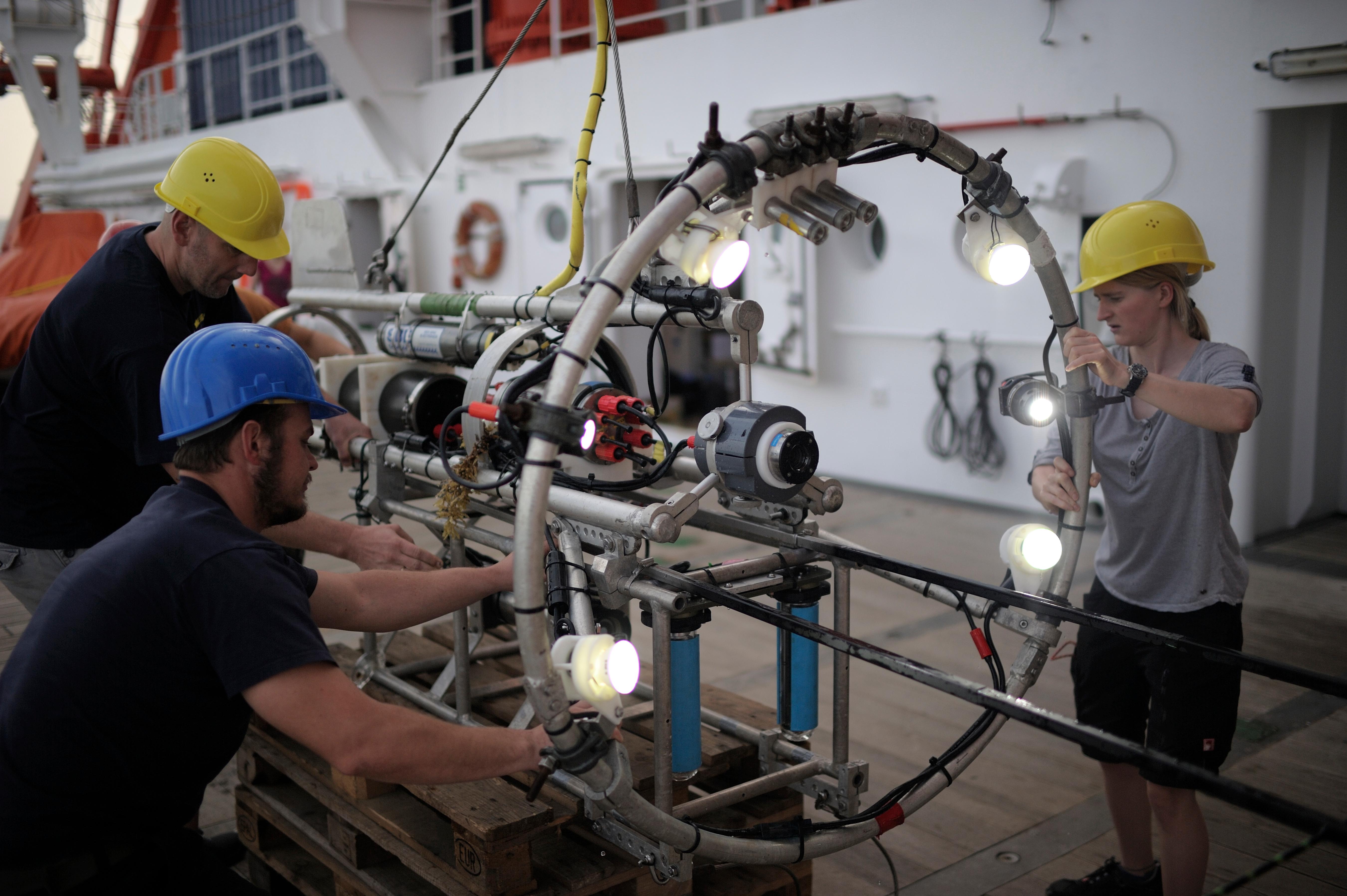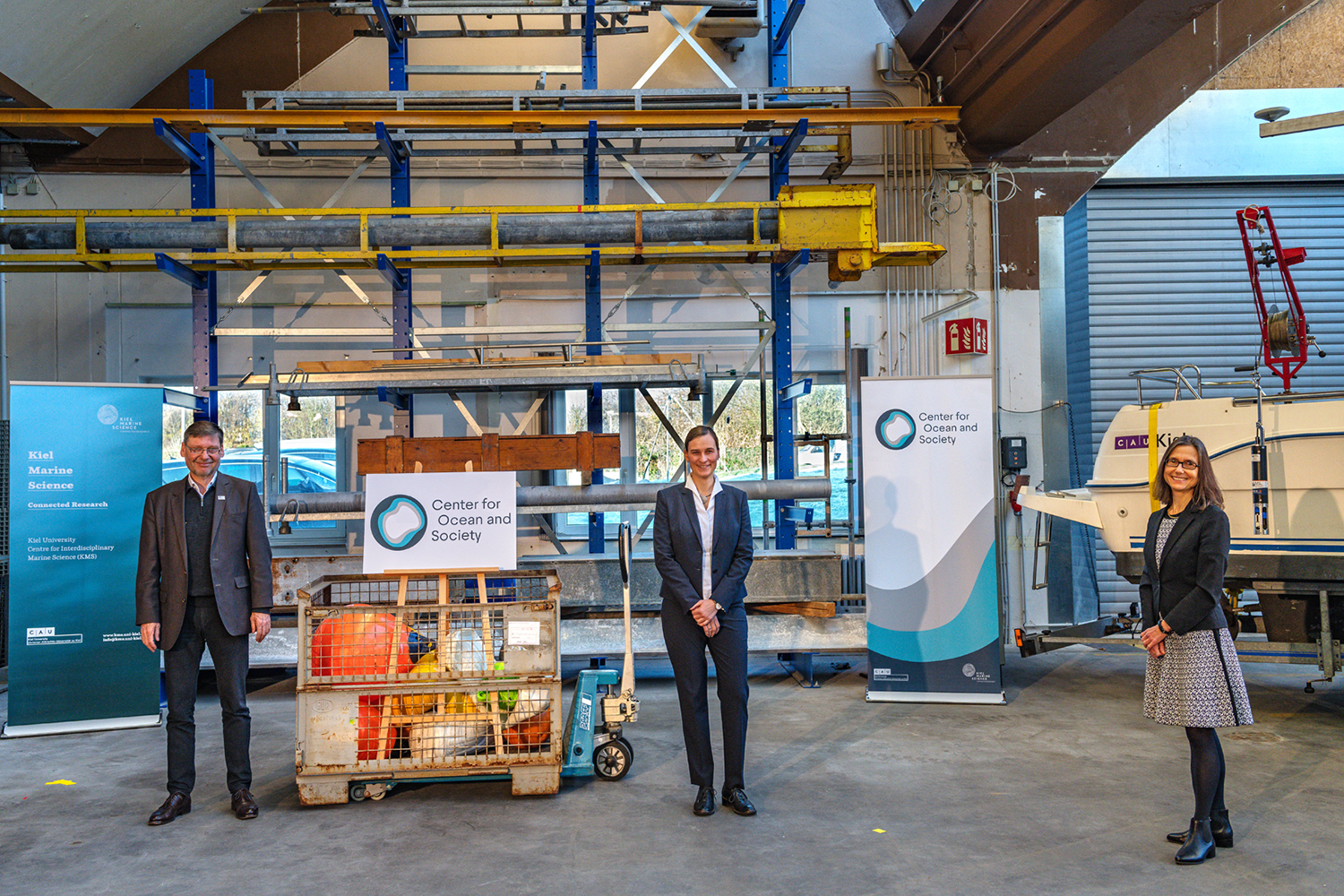It has been estimated that between 4.8 to 12.7 million tons of plastic are entering the oceans each year. Unlike organic material the artificial substances are degraded very slowly. Since most plastics float in seawater, it is expected they are accumulating at the sea surface. There, indeed, you can find plastics of various sizes, but not as much as you would expect from the additional waste reaching the ocean every year. Studies in recent years have already shown that marine snow, i.e. biological particles and faecal pellets of plankton organisms, can bind microplastic particles and might therefore transport them into the depths.
Researchers from the GEOMAR Helmholtz Centre for Ocean Research Kiel have now for the first time modelled on a global scale how effective this biological transport of microplastics away from the surface is. As they now publish in the international online journal Frontiers in Marine Science, marine snow does not remove microplastics from the upper water layers very effectively, and this removal could become even less effective in the future. "Ocean warming as a result of climate change will affect biological productivity differently in different regions. This will also affect the biological microplastic transport," says Dr. Karin Kvale, from GEOMAR, lead author of the new study.
The researchers, who are specialised in biogeochemical modelling of the oceans, compared previously-published microplastic concentrations in the ocean surface to biological production in an earth system model to calculate the microplastic removal rate. "If you simply assume the quantities, marine snow should be able to transport a great deal of microplastic away from the surface- so much that marine snow should remove most microplastics to the seafloor within two years if pollution ceases," explains Dr. Kvale.
However, this finding is contradicted by the considerable amounts of microplastics that are actually found near the ocean surface. "From this we can only conclude that although the marine snow partially removes the microplastic particles from the surface layers, it does not bind them very well. A large proportion is released again before the marine snow has sunk far enough to finally take the microplastics into the depths," explains the researcher.
Since the productivity of the plankton in the world's oceans is expected to change with rising temperatures, the team has also simulated how these changes might affect the removal of surface microplastics, if the amount of plastic in the oceans continues to increase. The simulation showed that in the subtropical regions the effectiveness of microplastic removal will decrease. "These are precisely the regions where most of the plastic accumulates due to the large ocean currents," says Dr. Kvale. In the polar regions, on the other hand, transport could even increase.
"There's a great mystery about the whereabouts of vast quantities of plastic in the ocean. Our study will hopefully make a small contribution to a better understanding of the dynamics and pathways of microplastics in seawater. But much more research is needed in this area. In any case, it would be best if the supply of plastics from land could be reduced significantly," summarises Dr. Kvale.
Reference
Kvale. K. F., F. Prowe, A. Oschlies (2020): A critical examination of the role of marine snow and zooplankton faecal pellets in removing ocean surface microplastic. Frontiers in Marine Science
https://doi.org/10.3389/fmars.2019.00808
Please note
This study was conducted within the framework of the Kiel research network Future Ocean.
Links
www.geomar.de/en/ The GEOMAR Helmholtz-Center for Ocean Research
https://www.futureocean.org/en/ The Research Network Future Ocean
Contact
Jan Steffen (GEOMAR, Communication and Media)
Tel.:+49 0431 600-2811
presse@geomar.de
…



